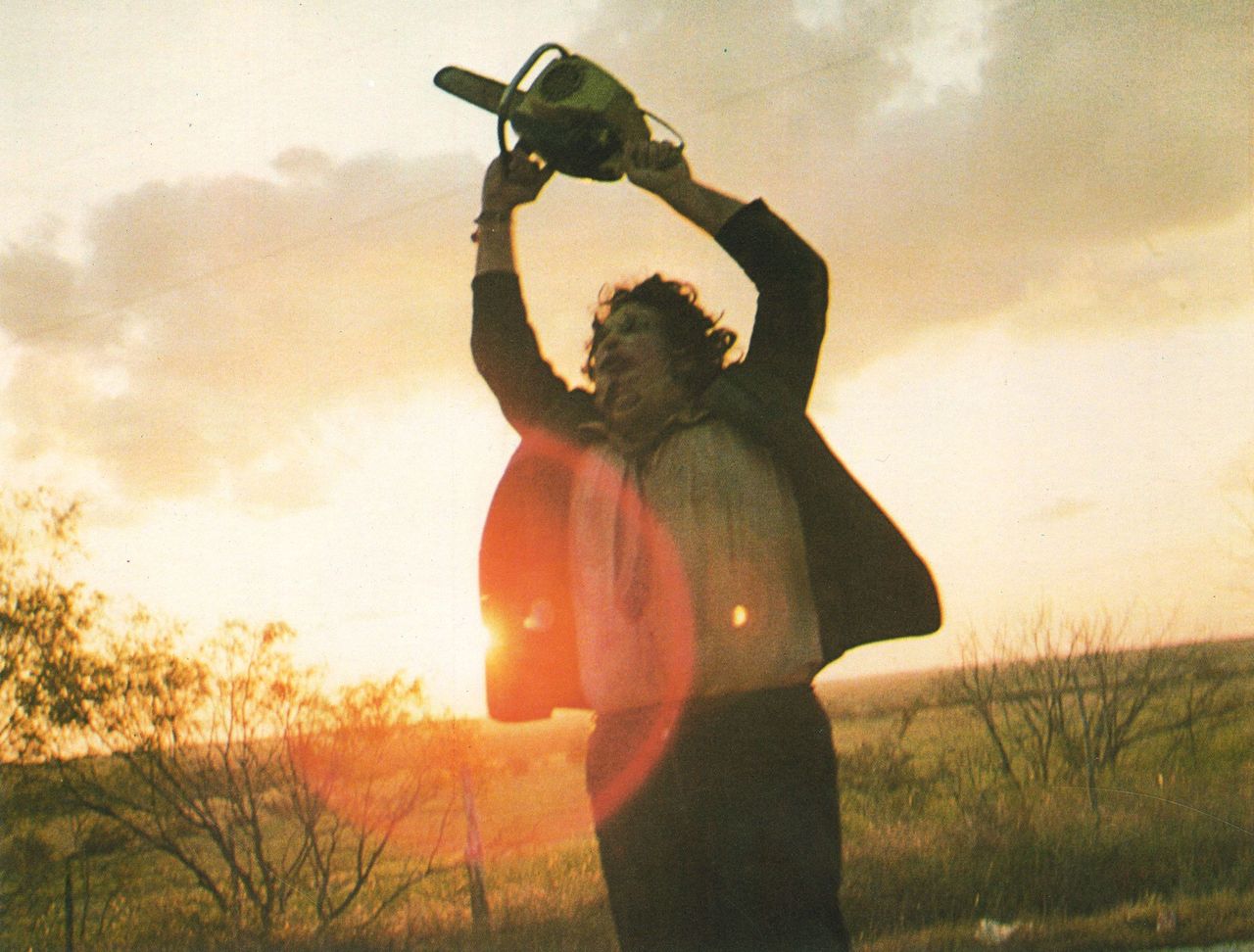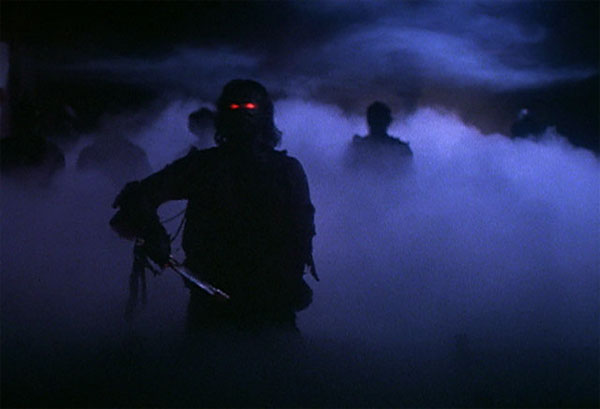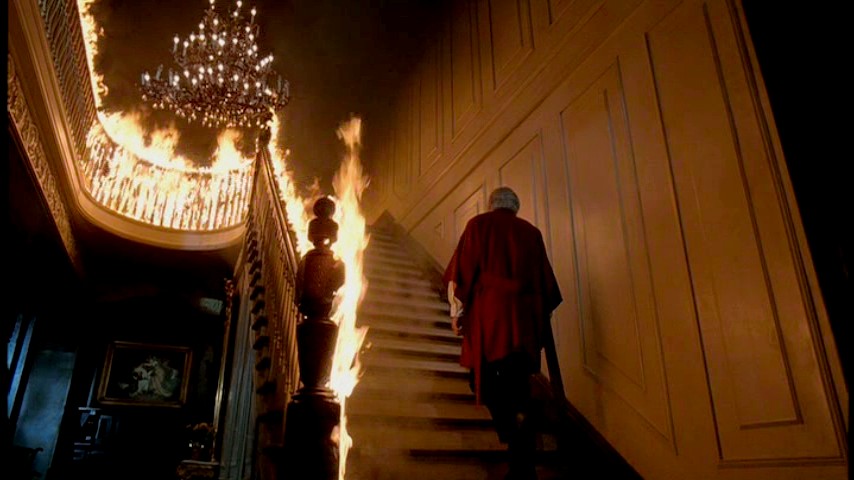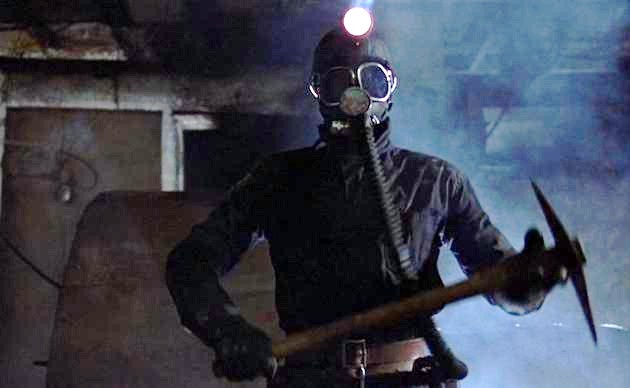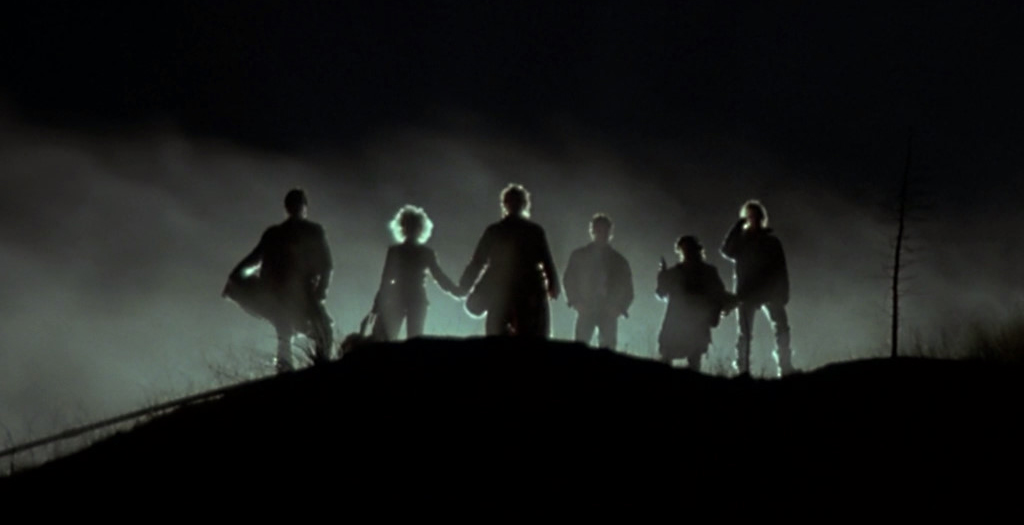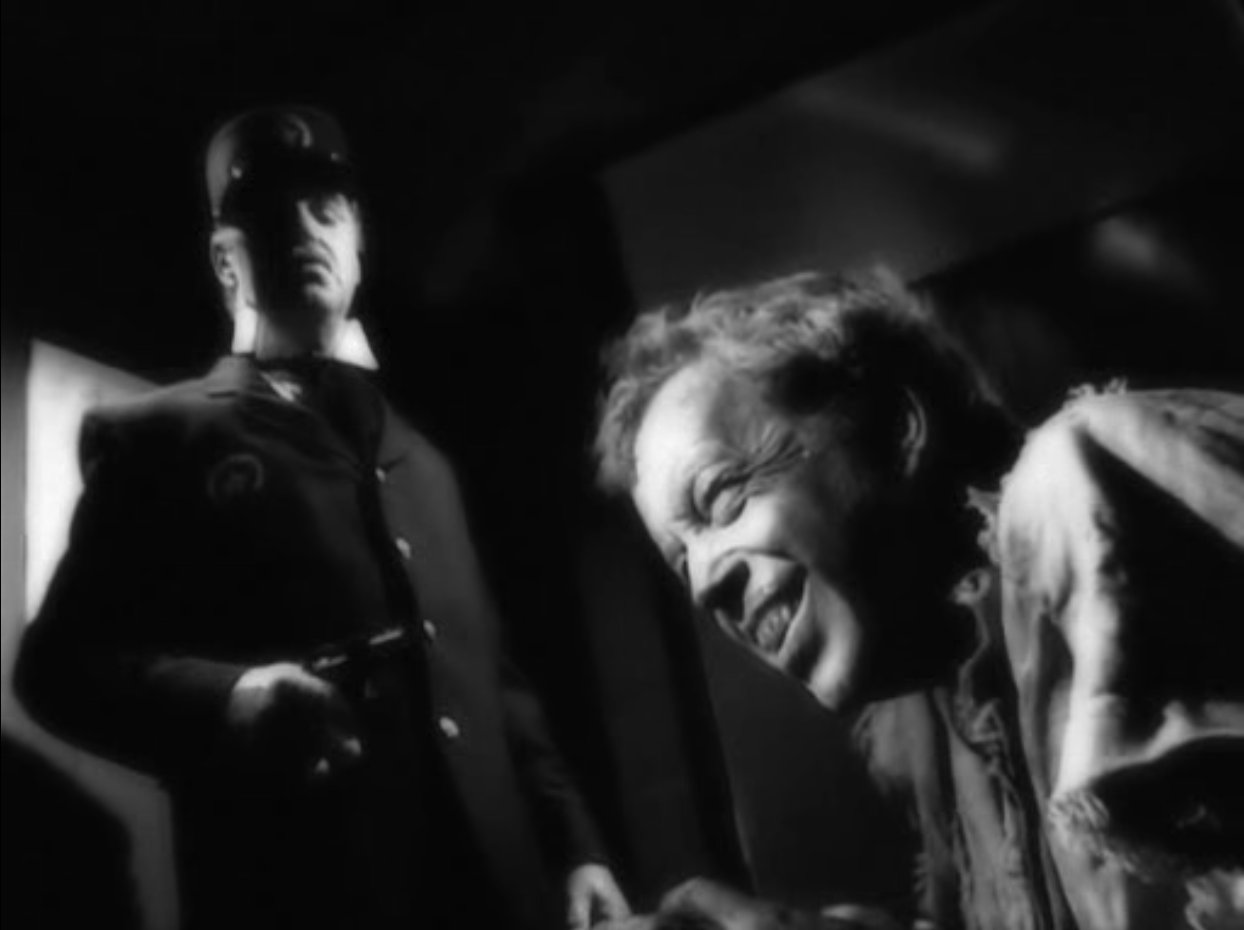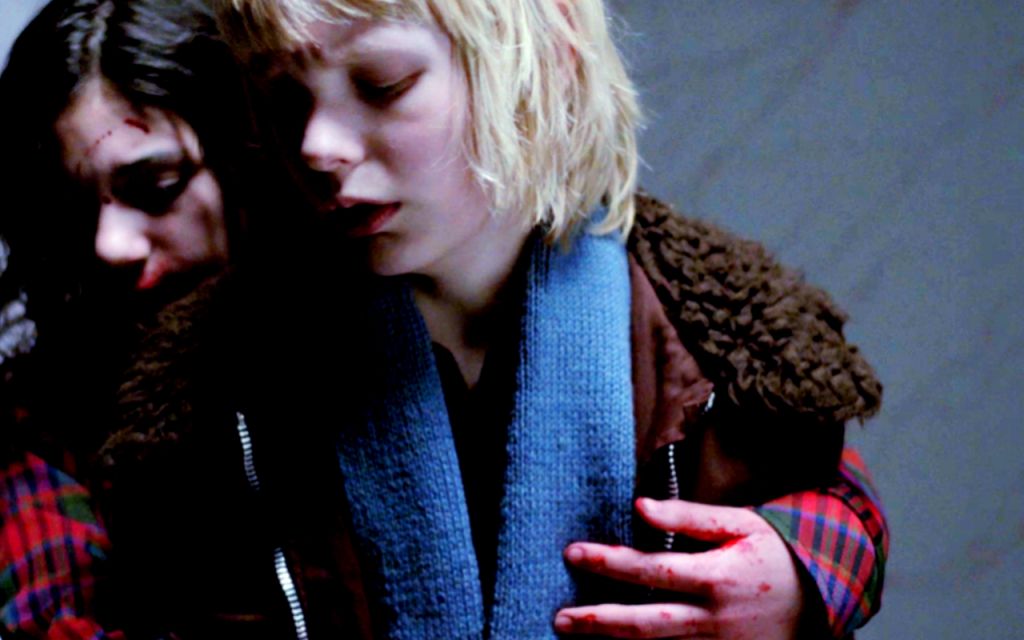8. The Texas Chain Saw Massacre (1974)
The inclusion of Tobe Hooper’s ’70s classic might turn a few heads to those reading this, but I can assure you it’s done with purpose. “The Texas Chain Saw Massacre” is arguably one of the most notorious films to come out of the ’70s and not only changed the way audience viewed horror films, but it created Leatherface: a character unlike anything moviegoers had ever seen. The film centers around 5 friends who are visiting their grandfather’s house in rural Texas after his death. After a few wrong turns, they’re lead to an old house complete with a chainsaw wielding maniac.
The reason TCSM made its way onto this list is how Director Tobe Hooper played with the audience’s senses and tricked us into thinking it was a far more graphic film than it really is. A film professor I had once said that TCSM was one of the only films that you honestly think has a scent by how effectively it uses rancid imagery. Hooper uses the same technique to trick us into thinking it’s a gore-fest when in reality the film is quite tame and is practically bloodless.
For example, in a very famous scene where Leatherface takes a woman and places her on to a meat hook, we see a wash tub below her that is used to catch any blood from falling. With this, we’re tricked into believing there’s going to be a waterfall of the red stuff, but in reality we see none. He also uses sound design to really unnerve the viewer and put them on edge throughout.
9. The Fog (1980)
In 1980, Director John Carpenter and Producer Debra Hill were coming off the massive success of their first horror film “Halloween” and set out to make their follow-up. Not wanting to do another “knife picture”, as Tommy Lee Wallace so affectionately put it, they drew from their childhood influences of EC Horror Comics, Edgar Allen Poe, and 1950’s horror/sci-fi films. The result is an atmospheric ghost story set in the sleepy seaside town of Antonio Bay, celebrating it’s 100th Birthday. What the residents don’t realize is that the town was built upon a leper colony and has a history of murder and deceit. Now the town has become shrouded in a mysterious fog that contains the lost souls of mariners out for revenge.
Carpenter re-unites with “Halloween” cinematographer Dean Cundy and creates some very haunting visuals. The fog becomes a character of its own and inspires dread into the viewer. Whenever a silhouette is seen appearing in the fog, it gives you chills. Carpenter’s flair for simplistic, to-the-point visuals are even more effective with his use of a minimalist electronic score that he composed himself. Though a flop in the ’80s, “The Fog” has gone on to be a classic in its own right and many feel it’s one of Carpenter’s best films.
10. The Changeling (1980)
Peter Medak’s haunted house picture from 1980 stands above a lot of its peers for it’s effective scares, chilling story, great performances and eerie music. “The Changeling” stars George C. Scott as John Russell, a composer that has just moved upstate after the death of his wife and daughter. In an attempt to put his life back together, John rents out a large Victorian mansion in Seattle, but soon comes to realize his new home is being haunted by an angry spirit.
What has really stuck with me about this film is the very chilling story and its many twists and turns. I found myself engrossed and heartbroken all at the same time, and without spoiling anything, the film does a great job at shedding a light on the upper class of society and how there’s a dark side to everyone. The film is also paced very well and doesn’t allow the audience to get bored, and George C. Scott is a treat as John Russell and gives the character the right amount of pain and suffering mixed in with heart and ingenuity. Ghost films are a dime a dozen, but “The Changeling” shouldn’t be missed.
11. My Bloody Valentine (1981)
Another goofy pick as most slasher films don’t really play up the atmosphere much, but this early ’80s Canadian slasher does. The film is set in the small mining town of Valentine Bluffs as they prepare for the first Valentine’s Day celebration they’ve had in over a decade. Harry Warden, a minor that was trapped inside a mine whilst the town partied, vowed revenge if the town ever celebrated Valentine’s Day again. The party goers begin to realize how true this legend is when people start turning up dead.
The plot is basic, but done effectively by Director George Mihalka by amping up the ambience of Valentine Bluff and making Harry Warden feel like a ghostly apparition. The film is filled with low-settling fog, good suspense and great characters. To keep the film authentic, George Mihalka decided to shoot all the mine scenes in a real mine 900 feet underground. Special lights and equipment had to be used as to not set off the methane gases in the air, but the end result was worth it.
The film is now infamous, not for it’s effective, suspenseful scares, but because of how the MPAA cut out 9 minutes from the film because of gore and violence. Though the film is remembered for all the gore it lost, it became a cult classic because it actually worked without it! For a lot of films having the MPAA remove footage hurts, but it somehow played in favor of this slasher gem.
12. Near Dark (1987)
The vampire genre can be extremely hard to tackle, especially now where vampire films are a dime a dozen. However, Kathryn Bigelow’s film “Near Dark” takes the folk lore creature out of the European dark ages and imbues it with a moody sense of Americana. “Near Dark” is the story of a young guy named Caleb who’s seduced by the beautiful Mae and brought into a vampiric clan of vagabonds traveling through various one horse towns, trying to feed their insatiable need for blood. The film is part western, part horror film and part Gothic love story that keeps to the vein of Stoker’s work.
What works so well about Bigelow’s work is the lack of bourgeois decadence these characters posses and instead they feel more akin to the rough-neck, rugged men like Clint Eastwood. Bigelow plays with subtly throughout with her images and storytelling to get the most out of each character without weighing the story down with tedious information.
The film plays out like a folk tale, but not in a way that makes it feel hokey; you just feel like these vampires are on the road to survive and that they’re out looking for where they belong all the while knowing it’ll never come. Bigelow’s use of music composed by the German electronic legends Tangerine Dream gives the film a unique feeling that departs from its down-home vibe. However, the film continues to chill even today and manages to do a rare thing – stay true to an age-old genre, all the while doing its own thing.
13. The Blair Witch Project (1999)
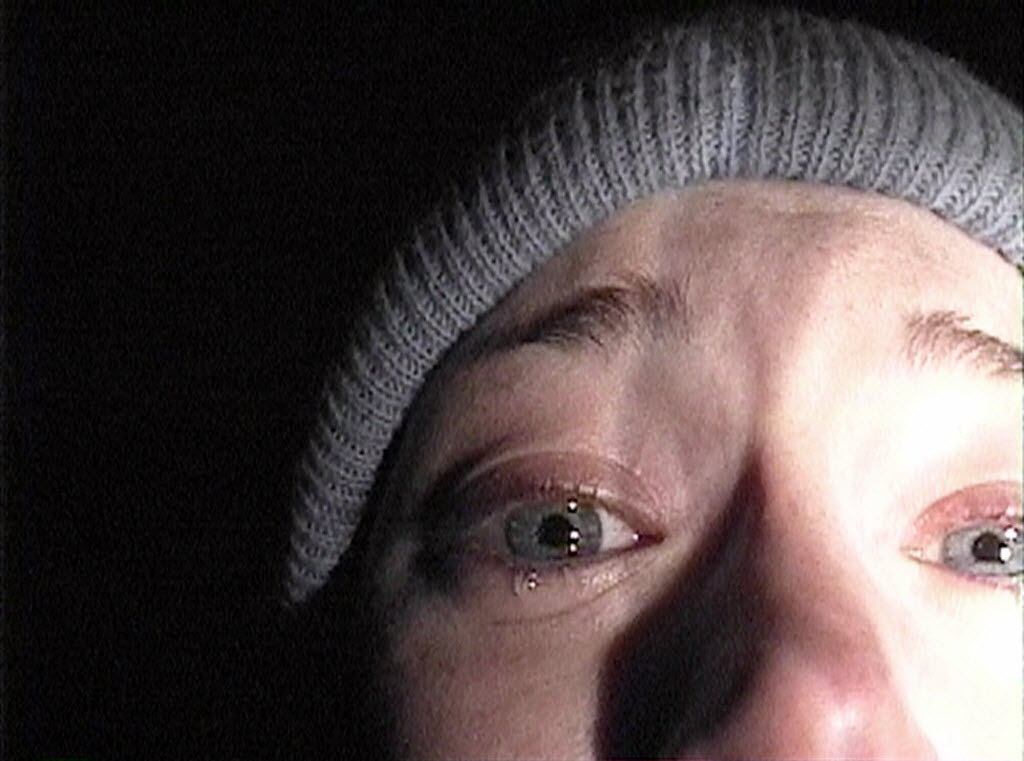
In 1999, audiences weren’t prepared for what directors Daniel Myrick and Eduardo Sánchez were about to unleash. The cultural phenomenon that is “The Blair Witch Project” was made on a shoestring budget by an unprofessional crew and completely ad libbed, the film broke barriers for both independent film and the horror genre. Though not the first “found footage” film, it was by far the most successful at the time. The story is simple: three film students are researching the legend of Elly Kedward, known affectionately in the town of Burkittsville as “the Blair Witch”. While hiking through the Black Hills of Maryland the team mysteriously disappears and the film we’re watching it supposed to be their footage left behind.
What makes “The Blair Witch Project” so effective was its innovation and resulting realism. There was no formal script and the actors had to ad lib their way through the film based on notes left to them by the directors. The fear the actors experienced was all real and not scripted, as the directors would purposely mess with them at night. It’s almost a social experiment gone awry.
The film does its own thing by not having a serial killer or a monster, or even any blood. We see what the three filmmakers see and we experience what they do. There are times that all we get is a black screen and horrific sounds over the image, so our mind has to put the image together itself. People fear what they don’t understand, and that’s the true theme of “The Blair Witch Project” and the reason I think it’s held up after all these years.
14. The Call of Cthulhu (2005)
One of the newest entries to the list, “The Call of Cthulhu” is a silent, black-and-white feature film directed by Andrew Leman who is one of the founding member of the H.P. Lovecraft Historical Society. The film is a faithful adaptation of the H.P. Lovecraft story by the same name and is about a man that’s sorting through his Great Uncle’s work after his death. While doing so he learns of a dark secret about a cult of people who are trying to free an ancient creature unto the world.
“The Call of Cthulhu” is interesting because it’s a niche film not just for its Lovecraftian connections, but also for its style that is intentionally a homage to 1920’s horror films. The Producers on the film thought it was best to shoot it in black-and-white and mimic the style of silent films to show how the film would have looked had it been produced in the 1920’s when it was published. With only a $50,000 budget and a lot of ingenuity, Leman was able to make an “unfilmable story” and satiate fans needs at the same time.
The film doesn’t have the largest budget, but all the props, costumes and art direction feed well into the aesthetic chosen and there’s some great moments where Leman builds some suspense, like when Inspector Legrasse comes across the Cult of Cthulhu in the backwoods of Louisiana. The film isn’t particularly scary, but that wasn’t the intent, instead they do a great job in building the aesthetic and the creepy mood with shadows and fog.
15. Let the Right One In (2008)
“Let the Right One In” is a 2008 Swedish film directed by Tomas Alfredson and is a film that’s just best described as beautiful. Based on the novel by the same name written by John Alvide Lindqvist, it tells the story of a bullied child named Oskar and how he meets a beautiful young girl named Eli, who we finds out is a centuries-old vampire. With Eli, Oskar learns to stand up for himself and get revenge on his bullies, all the while falling for this mysterious girl.
The film is one of the best examples of platonic love between two young characters, but it never loses its horror edge. The cinematography is absolutely gorgeous and the two young leads act out their roles perfectly. The film is a fantastic bridge between the mainstream and horror because it deals with themes of love and revenge that so many moviegoers are used to, but still harnesses all the suspense and morbid beauty that makes horror films fun.
One of the most heart pumping scenes comes when Håkan, Eli’s keeper and best friend, kidnaps a young boy in the school gymnasium to drain him of his blood. To this day the scene keeps me on the edge of my seat, and even though it’s a film about a vampire, the blood is used sparingly. In 2010, Matt Reeves did an English remake to the film, and while it’s not a bad film, it loses some of the beauty of the original and I’d recommend seeking out the Swedish version instead.
Author Bio: Michael Viers is an award winning filmmaker from Milwaukee, WI and a graduate from the University of Wisconsin – Milwaukee with a Bachelor’s Degree in film. He has made two successful short films during his stay at the university: From the Darkness Theatre which screened at the Short Film Corner at the 66th Festival de Cannes and Love You Still which debuted at the 2013 Milwaukee Film Festival. His new film was accepted to play at TromaDance in New York, you can help him a lot by donating here.
